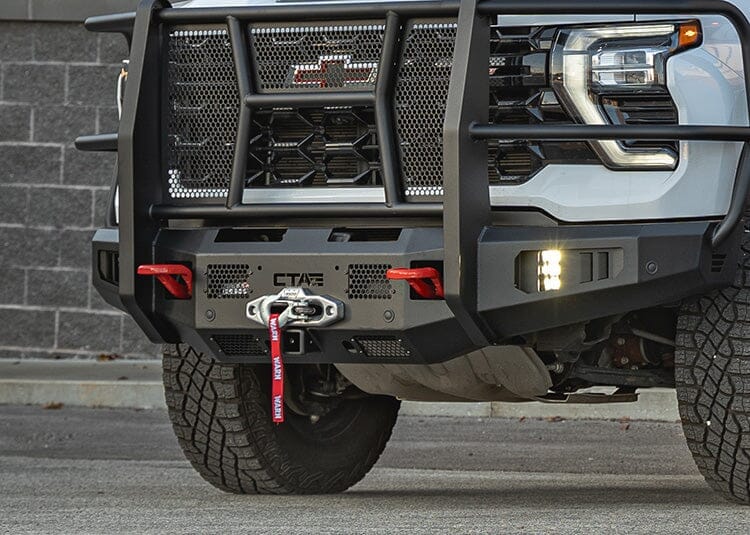
Overlanders and off-roaders know that planning for recovery is part of the adventure. Taking your vehicle out onto the open trail is exhilarating. Navigating rocky ledges, crossing sticky mud bogs, crawling over boulders, and safely climbing steep sandstone paths to get to jaw-dropping views all get the adrenaline pumping and keep enthusiasts coming back for more. Sometimes getting through these challenges takes more than driving skills; sometimes, you need a winch.
What's a Winch?
A winch is a simple mechanical device built to lift or haul heavy weights. The device consists of a drum, motor, gear train, and a rope or cable and attaches to your truck's bumper via heavy-duty bolts. If you get into a bind while off-roading, which you will if you're doing it right, your winch will help get you going again. You can't afford to leave home without a winch.
Which Winch?
If you're new to winches, trying to choose one might seem a bit daunting. Winch terms can be a bit technical, and getting the wrong winch can honestly be a disaster. In this article, we will share some basics to help you get to start, but we strongly recommend talking to an expert here at CTA before you buy, especially if this is all new to you. While there are many good winches on the market, we stand by WARN truck winches for their quality, innovation, and reliability. Our customer service team is standing by to answer all your questions about winches.
Let's take a close look at winches:
Capacity/Size/Pull Rating
You'll often see these terms used interchangeably when discussing winches, but they all refer to the same thing: how much weight the winch can pull before failing.
So how much capacity or pull strength do you need? The formula is simple:
Minimum Winch Capacity = 1.5 x Gross Vehicle Weight Rating (GVWR)
If the GVWR of your SUV is 7,000lbs, you need a winch with a pull rating of 10,500lbs. When in doubt or in between, go with the higher-rated winch.
This begs the question: how do you know your GVWR? You'll start with your vehicle's GVW or Gross Vehicle Weight, which you'll find in your owner's manual or from the manufacturer. Then you need to add weight estimates for off-road mods like bumpers and roof racks, roof top tents, fully loaded toolboxes, and cargo boxes, plus all the rest.
You can't go wrong with more capacity than you need; bigger is definitely better. More power puts less strain on the motor and prolongs the life of the winch.
Power
Winches come with two types of power sources: electric and hydraulic. Electrical winches are powered by the battery in the vehicle, while the vehicle's power steering pump powers hydraulic winches. Is one better than the other? Not really, but each does have its own pros and cons.
Electric Winches
Pros:
- Less expensive than hydraulic models
- Can operate while the vehicle is powered off
- Fast and efficient winding
- Easy installation
Cons:
- Prone to overheating when used for a long period of time. Not recommended for daily, all-day, regular use.
- Water resistant, not waterproof. They can handle a splash of water but not submersion.
Hydraulic Winches
Pros:
- Durable; these are true workhorses
- Work underwater just fine (these models are used on boats)
- Higher pull ratings
Cons:
- The engine must be running while operating the winch
- More expensive than electric
- Less widely available
- Require professional installation
For most overlanders and off-roaders, electric winches are sufficient for the task.
Cable or Rope
Of all the winch characteristics, the subject of cable or rope likely gets the most debate. Steel cable is affordable, easy to maintain, and very durable. But, steel cable is heavy and dangerous. When winching, steel cable is under tremendous tension and can seriously injure or even kill someone if it snaps. You have to wear heavy gloves when working with steel cable and exercise extreme caution.
Synthetic rope is safer, lighter, easier to handle, and actually stronger than steel cable. If the rope breaks under tension, it drops to the ground without snapping. Sounds perfect, right? Not so fast. Synthetic rope is a bit high maintenance. It can easily be damaged by heat, abrasion, sandy or muddy conditions, and even UV exposure. And it's expensive.
Talk to the folks at Chandler about choosing between rope and cable. We'll help you determine the best option for you.
Anything Else You Need to Know?
When considering a winch, here are a few other things to think about:
- As mentioned earlier, electric winches are powered by your car's battery. This means you could find yourself with a dead battery after pulling your vehicle out of a ditch. Many users opt to solve this problem by either upgrading to a deep-cycle battery or by implementing a two-battery setup where one battery is used to power the car, and the other is used to power the winch and other accessories.
- Winches are operated using a remote control, wired or wireless. An app can even operate some winches on your phone. (This means you've got to keep your phone charged when on the trail.)
- Most OEM bumpers aren't built to handle a winch. You'll likely need to upgrade your bumper before installing a winch.
- You'll need to get a Hawse fairlead for synthetic rope or rollers for steel cable.
What's the Best Way to Get the Right Winch?
The best way to get the right winch for your truck is to call Chandler Truck Accessories. We sell heavy-duty truck accessories, including WARN winches and Factor 55 closed system winching shackle mounts. Reach out today to find the right winch for your vehicle.
